FAA Part 107 Study Guide
UAS Regulations
What is the FAA and what is Part 107?
The Federal Aviation Administration (FAA) is the federal agency, division of the Department of Transportation, that is responsible for the regulation and oversight of civil aviation as well as operation and development of the National Airspace System.
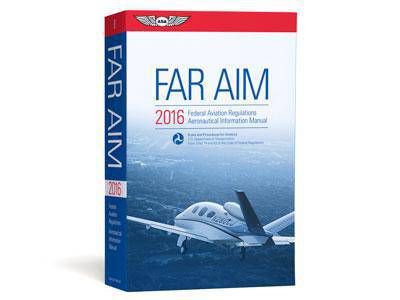
The FAA regulates flight under the provision of US Public Law codified within “CODE OF FEDERAL REGULATIONS TITLE 14 – AERONAUTICS AND SPACE“(14 CFR), also known as Federal Aviation Regulations, or FARs.
The FARs are divided in Parts. While many of the FAR’s sections cover aspects relevant to UAV operations, remote-pilots are mainly affected by Part 48 of the FARs, “Registration and Marking Requirements for Small Unmanned Aircraft,” and the most recent Part 107, “Small Unmanned Aircraft Systems”.
You are not required to memorize regulation numbers (i.e §107.1), these are for reference only.
Who does Part 107 apply to? (§107.1)
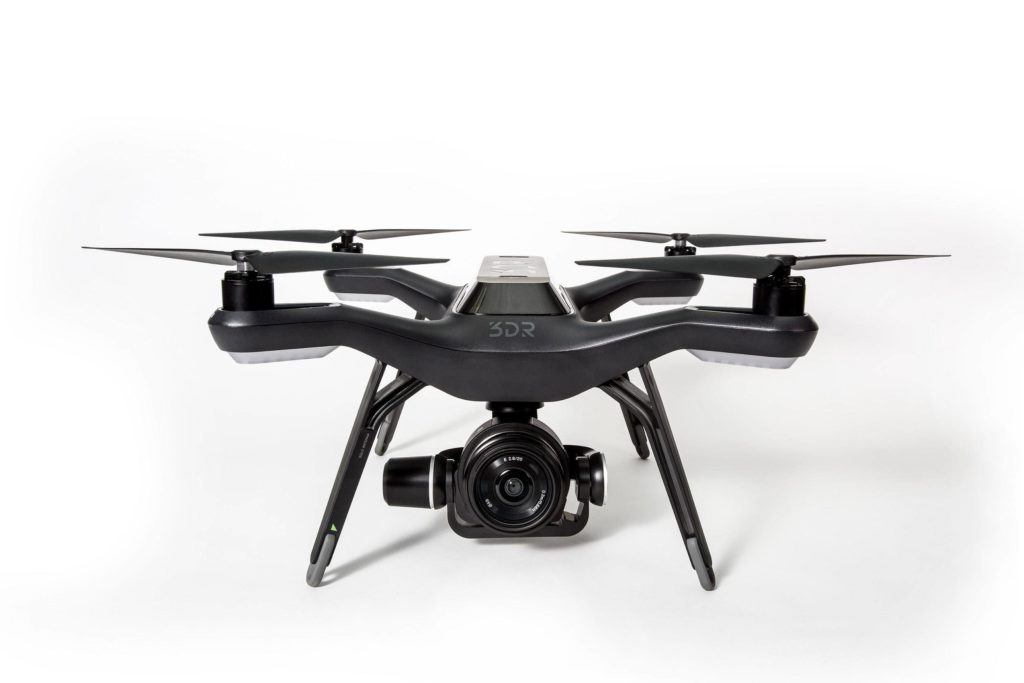
Part 107 applies to every civilian unmanned aircraft system, weighing under 55 pounds, operated in the United States, and its operator, except if it meets all the criteria listed below.
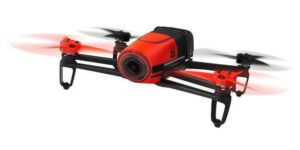

Section 336 of Public Law 112-95 states that FAA rules including Part 107 do NOT apply to model aircraft as long as all the following conditions are met:
- the aircraft is flown strictly for hobby or recreational use; and
- the aircraft is operated in accordance with a community based set of safety guidelines and within the programming of a nationwide community-based organization (the Academy of Model Aeronautics for instance); and
- the aircraft is limited to not more than 55 pounds unless otherwise certified through a design, construction, inspection, flight test, and operational safety program administered by a community-based organization; and
- the aircraft is operated in a manner that does not interfere with and gives way to any manned aircraft; and
- when flown within 5 miles of an airport, the operator of the aircraft provides the airport operator and the airport air traffic control tower (when located at the airport) with prior notice of the operation.
Part 107 does not apply to aircraft operating under a “333” exemption.
Who may operate a small UAS? (§107.12 + §107.65)
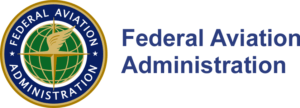
The person responsible for the flight of a small UA (Unmanned aircraft), the remote-pilot in command (PIC), must hold remote pilot airman certificate with a small UAS rating.
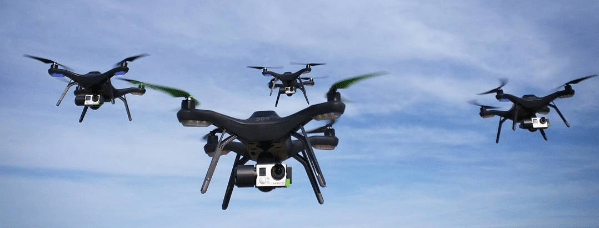
A remote-PIC is required for each UAS in flight (§107.19), and that person may only command one sUA at a time. (§107.35)
The person operating the small UAS must be the remote-PIC or be under his/her direct supervision.
To qualify for a remote pilot certificate (§ 107.61), a person must:
- Be at least 16 years old,
- Read, write and speak English,
- Pass the Unmanned Aircraft General – Small (UAG) KNOWLEDGE TEST
- Be vetted by the TSA (Transportation Security Administration)
In lieu of the knowledge test, licensed manned aircraft pilots may take an online course as long they have a current flight review.
Cheating:
Don’t do it. (§107.5+ §107.69)
Hopefully this is common sense, but it could be asked on the test so here it is: you’re not allowed to cheat on the test, neither can you falsify any certificate or document required by part 107, sorry.
Recency requirements:
To be Remote-PIC, you must have passed the UNMANNED AIRCRAFT GENERAL – SMALL (UAG) KNOWLEDGE TEST within the past 24 calendar months, or a recurrent knowledge test.
Manned aircraft pilots meeting the flight review requirements must have successfully completed the online initial or recurrent training within the past 24 months (§107.67).
Remote-PIC responsibilities
The remote-PIC is solely responsible (§107.19) and has final authority over the flight, including:
- Determine the entire flight crew (remote-PIC included) is physically and mentally fit for the operation (§107.17),
- Following all applicable rules of part 107 and having the ability to direct the aircraft to ensure compliance
- Discontinuing the flight if any unsafe condition occurs (§107.15)
- Ensuring that the aircraft poses no threat to any person or property in the event of a loss of control for any reason (catch all rule)
- Ensuring the aircraft is not operated carelessly or recklessly (catch all rule #2: §107.23) nor carrying hazardous materials (§107.36)
In case of an in-flight emergency, deviating from any rule of part 107 is allowed to the extent needed to meet that emergency.
A written report must be submitted only if requested by the FAA.
Pre-flight responsibilities
(107.49) Before every flight, the remote-PIC must assess the environment and potential risks to persons and property in the immediate vicinity both on the surface and in the air.
This assessment must include:
- Local weather conditions;
- Local airspace and any flight restrictions;
- The location of persons and property on the surface; and
- Other ground hazards.
The remote-PIC must ensure the crew is briefed about:
- the operating conditions,
- emergency procedures,
- contingency procedures,
- roles and responsibilities,
- and potential hazards.
Aircraft Registration (§107.13, §48)
All SUA weighing more than 0.55 pounds must be registered at HTTPS://REGISTERMYUAS.FAA.GOV/, takes 5 minutes, costs $5.
Print your certificate of registration and carry it when operating the aircraft. (If the aircraft serial number was not used during the registration process, label the aircraft with the certificate number given by the FAA)
Registration must be renewed every 3 years.
Accident Reporting (§107.9)
The remote-PIC has 10 days to report an accident to the FAA if any of following occurred:
- A serious injury to a person,
- A loss of consciousness,
- Damage exceeding $500, excluding the sUAS itself.
Report accidents to the FAA online HERE.
Alcohol and drug rules (§107.27)
As a minimum the remote-PIC, anyone operating the sUAS, and Visual Observers must adhere to the following guidelines:
- 8 hours from “bottle to throttle” (no drinking of alcohol within the last 8 hours),
- do not fly while under the influence of alcohol, including a hangover,
- do not fly while using any drug that may adversely affect safety,
- alcohol concentration below 0.04 in a blood or breath specimen.
Refusing to submit to a drug or alcohol test (§107.59), and drug related offenses (§107.57) are grounds for certificate suspension or revocation.
Oh, you can’t carry drugs with your drone either. (§91.19)
VLOS (§107.27) and VO (§107.33)
The aircraft must always be within visual line-of-sight (VLOS) of:
- The remote-PIC and the person operating the drone, or
- A visual observer (VO)
VLOS means the aircraft is close enough to be seen without any aid such as binoculars (Contact lenses or glasses are excluded) .
The use of VOs is optional. VO’s should be used if the Remote-PIC will not be able to maintain VLOS with the aircraft throughout the flight (i.e scanning a building).
VOs must be briefed by the remote-PIC and in communication with him/her during the flight.
FPV (First Person View on your screen) is not VLOS, to the contrary. If you are flying by looking at your live video, you should have a VO looking at the aircraft.
Flight over people (§107.39)
- SUA may not operate over any persons that are not directly participating in the operation (required crew), unless they are under a covered structure or stationary vehicle.
Time of operation (§107.29)
- You may operate from sunrise to sunset (daytime).
- If your aircraft is equipped with anti-collision lights (red or white strobing light), “civil twilight operations” are permitted (30 minutes before official sunrise to 30 minutes after official sunset, local time)
Right-of-way and operating near airports (§ 107. 37, § 107.41)
Manned aircraft always have the right-of-way, sUAs must yield to them.
sUA may not interfere with operations and traffic patterns (LINK TO AIRPORT OPERATIONS STUDY GUIDE) at any airport, heliport, or seaplane base.
Dropping objects
Dropping objects from the Unmanned aircraft is permitted as long as the remote-PIC has determined that it will not pose a threat to the safety of persons or property on the ground.
The remote-PIC should also make sure performance and balance of his UA is not adversely affected by the drop.
Operating limitations for small unmanned aircraft (§107.51).
| Maximum Speed over the ground | **100 mph** (87 knots) |
| Maximum Altitude | **400 feet** above ground level (AGL) or within 400 feet of a structure, whichever is higher. |
| Minimum visibility | **3 statute miles** from the control station |
| Minimum distance from clouds | No closer than: **500 ft below the cloud, 2,000 ft horizontally**. |
Operating from a moving vehicle (§107.25)
| Scenario | Rule |
|---|---|
| From a moving aircraft? | Not permitted, ever |
| From a boat? | Yes, if the UAS is over sparsely populated area and not transporting property. |
| From a land-based vehicle (i.e car)? | Yes, if the UAS is over sparsely populated area, and not transporting property. |
Waivers
How am I going to map my construction site without shutting it down if flying over people is not allowed?
Option one, follow the rules. Ask the workers to take cover in a building (covered structure) or a stationary vehicle for 5 minutes while you map the site.
Option two, apply for a Certificate of Waiver HERE. Let the FAA know that you can operate safely without abiding by certain rules. For example, that all the employees on your site already wear PPE (Personal Protective Gear, i.e hard hat) and that you’re flying a very light aircraft like Solo. You should easily obtain a waiver from the FAA. Limitations will most likely include the requirement to display that UAS flights occur on the site, and to conduct flight exclusively within the boundaries of the site.
The FAA recommends applying for a waiver 90 days prior to the operation start date.
Only certain rules are waivable (§ 107.205):
107.25 – Operation from a moving vehicle or aircraft.
However, no waiver will allow the carriage of property of another by aircraft for compensation or hire.
107.29 – Daylight operation.
107.31 – Visual line of sight aircraft operation. However, no waiver of this provision will be issued to allow the carriage of property of another by aircraft for compensation or hire.
107.33 – Visual observer.
107.35 – Operation of multiple small unmanned aircraft systems.
107.37(a) – Yielding the right of way.
107.39 – Operation over people.
107.41 – Operation in certain airspace.
107.51 – Operating limitations for small unmanned aircraft.
The entire FARs are viewable HERE.
Interested in working with us?
We are always looking to partner with like-minded organizations and to hire talented people. Send us a message to start the conversation.

